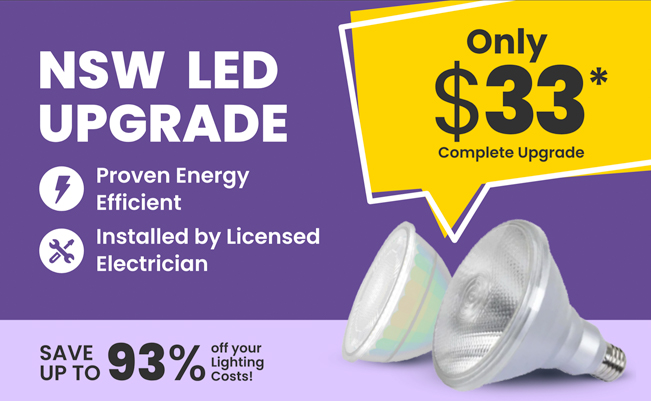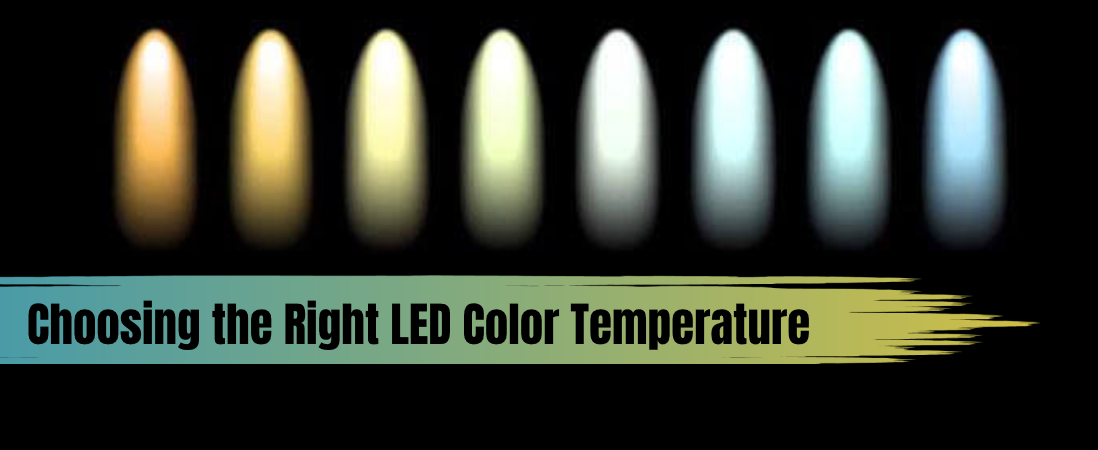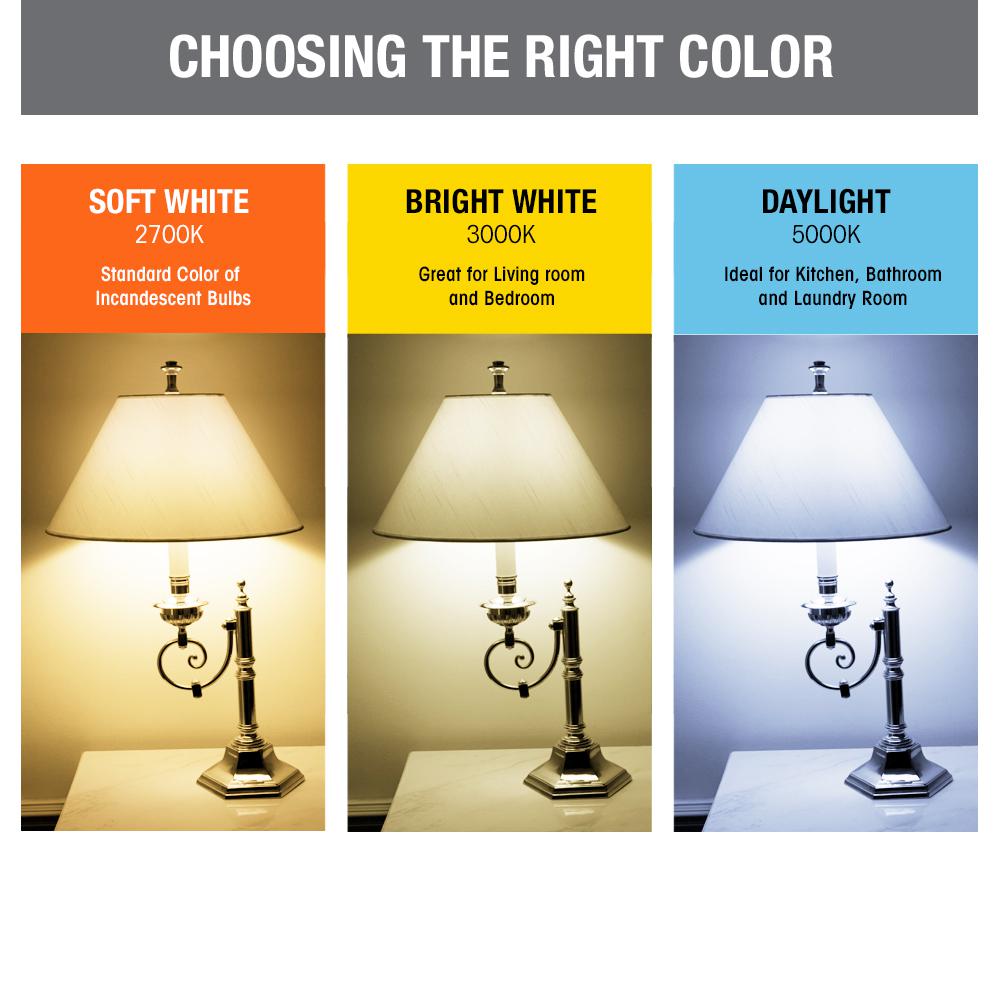
LED Replacement Program Highlights The Government LED Replacement Program is designed to help Australians save money and protect the environment. […]

Looking to find the perfect LED lighting for your home or workspace? Our comprehensive guide to choosing the right LED colour temperature has got you covered! Learn about the different colour temperatures available and discover how to choose the ideal LED lighting to create the perfect ambience for any setting.
Choosing the right colour light bulb temperature lighting can be a confusing task for the average customer.
When buying LED lights to satisfy a particular space design, careful attention must be paid to the colour temperature. Otherwise, the final light output and effect will not be uniform and will fail to meet expectations.
This article provides details and covers the technicalities to help understand concepts of color temperature chart, to ultimately choose the right LED light for the space.
As a general tip, the LED lighting color, output and style should match the aesthetics and furniture of your space.
The Correlated Color Temperature or CCT of an LED light fixture defines the appearance (i.e., warm or cool lighting effect) produced by the light bulb. It should be mentioned that the value is not an indication of how hot or cool the bulb feels to the touch.
Also Read: Do LED Lights Get Hot – How Hot Are LED Bulbs?
Colour temperature is measured in degrees Kelvin on a scale of 1000 to 10000.
Correlated light bulb colour temperature represents the colour of the light source, highlighting the warmth or coolness of the light. Understanding this value facilitates the choice of LED lights that match the exact setting and ambience of the space.
The LED light bulb color temperature has a major effect on the room where the lights are used. The value is measured in Kelvin with typical values for commercial and residential lighting ranging between 2000 & 6500K.
Heat from a light source produced by passing current reflects on the color effect of the light source and the change in heat is reflected in a change in the Kelvin value.
On the Kelvin colour scale, the low end of the spectrum is red, the middle is daylight, also referred to as neutral light, and the upper end is blue.
Reflecting this scale onto the output of a LED lighting fixture means a LED light with a Kelvin value at the lower end will appear red to yellow, giving a warm color output and a warm effect on the room, while a value at the higher end will give a bluish effect giving the room a cool effect.
For all the values on the spectrum, the change in color temperature does not affect in any way the bulb’s physical temperature.
Aside from the effect on the ambience of a space, color temperature also has a significant effect on human emotions and interactions. Research shows that different LED color temperatures can motivate, excite and relax people.
For example, warm light is excellent for creating relaxed and romantic settings for dinners, while bright, neutral light is excellent for working spaces. Cool light is usually used in offices to create energized and happy environments.
Read this short guide to understand more about the effects of colour temperature on space.
Color temperature chart reflects the color change on the Kelvin color scale caused by the change in the Kelvin degrees.
Choosing the right color temperature can make a huge difference in selecting a light that serves the purpose of the space.
The LED light bulb colour temperature chart ranges from 1000K to 10000K and shows values in degrees Kelvin, rounded up for ease of use:

1800K- Candlelight
2500K- Sunrise and Sunset
3000K- Light bulb
3500K- Morning or Evening sun
4000K- Moonlight
5500K- Midday sun
6500K- Cloudy sky
10000K- Clear sky
The color temperature chart is mirrored onto the LED Lighting color temperature ranges below, to give relevance between the temperature and the expected effect.
The degree values are included on the lighting package to assist customers in their selection.
1500K-1800K- Candlelight
1900K-3500K- Warm
3600K-4500K- Natural
4600K-5500K- Cool
5600K-6400K- Cool daylight
6500K+- Ultra daylight

Each room in the house and every space serves a different purpose, and the lighting requirements can vary widely from one space to another.
These factors are crucial to study while planning the lighting selection for space and choosing the exact colour temperature.
Below are some pointers to help define the space and choose the correct colour temperature for a space.
A number of other questions can also help in making the right choice, such as the specific task the light has to serve, like reading, working or sleeping, or the effect the lighting will have on potential guests, whether it’ll make them comfortable or tense.
These questions and pointers will help draw a clearer understanding of the type of LED light needed and the color temperature expected for the space.
As mentioned earlier, LED bulbs with a value between 2000K and 3000K have a warm light, values of 3500K produce a neutral light, and bulbs with values of 4000K and upwards produce a cool light.
Moving forward with this knowledge, as well as the pointers and questions detailed above, the below section defines a guide for choosing the right color temperature for specific types of spaces as well as recommendations for each.
Tips to Consider
Recommendations
This range communicates directly with the light sensors in humans, which can detect differences between bright daylight and warmer tones that signify the day is coming to an end.
Warm colour temperature LED lights prepare the brain for a good night’s rest. Warm light bedside reading lamps are also recommended for directed nighttime readings.
There is no best or worst colour temperature.
Each colour temperature has its benefits and serves a specific purpose. Typically, warmer color temperature lighting fixtures with values ranging from 2700K-3000K are used more often.
Colour temperature does not affect actual brightness.
A LED light with a color temperature of 5000K and a specific lumen output might seem brighter than the same light with a 2700K temperature, however the brightness isn’t affected.
The difference in effect is due to the different colours and the eye’s perception of each colour.
One has a more vivid white colour temperature and looks brighter, while the other exhibits a warmer colour temperature; however, the actual brightness does not change.
No, colour temperature is not relevant to the heat emitted by the bulb or the heat on the electronic components of LED fixtures and the value is only related to how cool or warm light looks.
Every space has a different purpose and therefore has different needs. The right color temperature can be determined as a result of the features, pointers and recommendations given throughout this article.
Consider the function and mood of the space. For example, warm white light (2700K-3000K) is ideal for living spaces and bedrooms, while cooler light (4000K-5000K) is better for task-oriented spaces such as kitchens, offices and workspaces.
Lights with warm colour temperatures are more suited as blue lights can cause straining of the eyes.